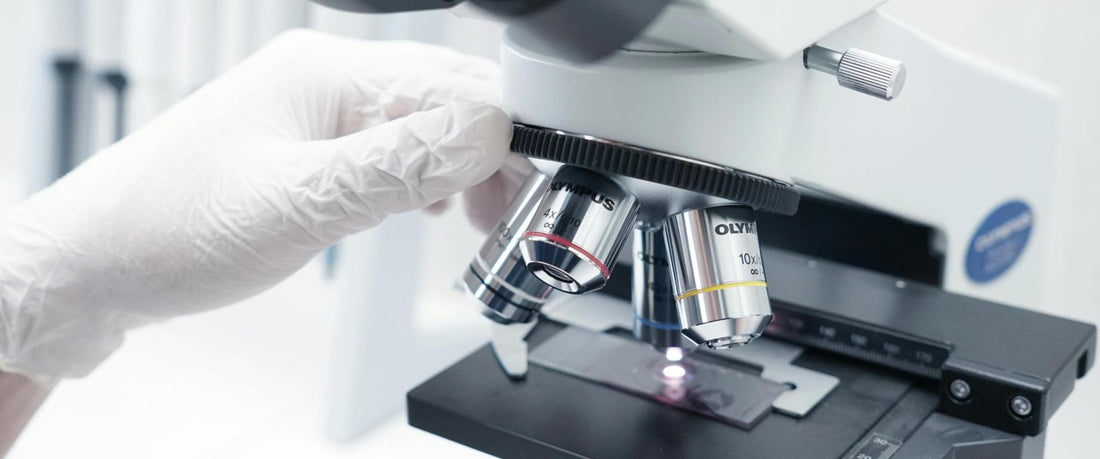
Introduction
Cocrystallization represents a modern approach to enhance the performance of bioactive compounds without altering their molecular identity. By pairing an active ingredient with a safe coformer through non-covalent interactions, cocrystals can significantly improve:
- Solubility and dissolution rate
- Chemical and physical stability
- Pharmacokinetic performance and manufacturability
This strategy bridges chemistry, formulation science, and industrial scalability—making it a powerful tool for both pharmaceutical and nutraceutical innovation.
Principle of Cocrystallization
A cocrystal is a crystalline solid composed of an active compound and a neutral coformer in a defined stoichiometric ratio. These two components interact through hydrogen bonding, π–π stacking, or van der Waals forces—without changing the active’s covalent structure.
Key mechanisms include:
- Lattice energy modulation: reduces crystal packing strength, enhancing dissolution.
- Supersaturation generation: allows higher transient solubility, improving absorption.
- Polymorphic control: enhances stability and prevents unwanted phase transitions.
Compared with nanoemulsions or liposomes, cocrystal technology offers greater scalability, better solid-state stability, and lower production complexity.
Performance Enhancements
Cocrystals provide multi-dimensional improvements in material and biological performance.
Physicochemical advantages
- Increased apparent solubility and dissolution rate
- Enhanced stability against heat, humidity, light, and oxidation
- Improved compressibility, flowability, and formulation flexibility
Pharmacokinetic advantages
- Sustained supersaturation supports greater intestinal absorption
- Reduced variability in plasma exposure
- Potential for lower dosing with comparable or improved bioavailability
Representative Case Studies
1. Silybin (Milk Thistle Extract)
- In vitro: The silybin–L-proline cocrystal exhibits up to a 100-fold increase in apparent solubility at pH 4.5 when combined with PVP, maintaining supersaturation for extended durations.
- In vivo: In rat models, the same cocrystal achieved approximately 16-fold higher C_max and AUC compared with raw silybin and even outperformed commercial phospholipid complexes.
2. Curcumin
- A curcumin–L-carnitine cocrystal demonstrated a 6.3-fold increase in AUC and a 10.7-fold increase in C_max relative to unformulated curcumin.
- Enhanced dissolution was observed across simulated gastric and intestinal conditions, confirming improved solubility–exposure correlation.
3. Lutein
- The lutein–adipic acid cocrystal increased melting point and significantly improved photostability and chemical stability.
- In pharmacokinetic testing, C_max and AUC rose by approximately 3.4-fold and 2.2-fold, respectively, compared with a standard lutein reference.
4. Coenzyme Q10 (Ubiquinol)
- The ubiquinol–nicotinamide cocrystal demonstrated exceptional oxidative stability.
- Dissolution rates improved by 38-fold in gastric fluid and 12.6-fold in intestinal fluid, translating into a 4.5-fold higher AUC and 2.2-fold higher C_max in animal models.
5. Rutin
- Rutin–amino acid cocrystals (e.g., with L-proline) enhanced solubility and absorption.
- Improved plasma exposure was accompanied by stronger pharmacodynamic activity, including antioxidant and glycemic support effects.
6. Overall insight
Across all five bioactives, cocrystallization consistently improved solubility and bioavailability while mitigating stability challenges—a consistent pattern supported by experimental evidence.
Regulatory and Commercial Feasibility
Cocrystals are now well-recognized by global regulatory agencies.
- Regulatory definition: The FDA classifies cocrystals as distinct crystalline forms of an existing API rather than new chemical entities.
- Safety considerations: Coformers must be food-grade or GRAS-approved, ensuring safety in nutraceutical applications.
- Scalability: Industrial methods such as solvent evaporation, mechanochemical grinding, slurry crystallization, spray drying, and hot-melt extrusion are compatible with GMP production.
- Quality control: Characterization involves PXRD, DSC, TGA, FTIR, and ssNMR, ensuring solid-form identity and stability under ICH-like conditions.
These features make cocrystal manufacturing not only scientifically sound but also commercially viable for long-term product deployment.
Conclusion and Outlook
Cocrystal technology is transforming how science tackles the solubility and stability limitations of natural compounds. It enables:
- Chemistry-conserving optimization without chemical modification
- Multi-fold improvement in solubility, stability, and bioavailability
- Compatibility with scalable, regulatory-compliant manufacturing routes
As demonstrated by silybin, curcumin, lutein, CoQ10, and rutin, cocrystals bridge laboratory innovation and market-ready formulation. Future efforts will focus on human pharmacokinetic validation, predictive screening of coformers, and integration with sustainable manufacturing technologies.
Cocrystal engineering stands as a scientifically validated, regulation-ready, and future-proof solution for enhancing nutraceutical and pharmaceutical performance.
References
1. Aitipamula, S., Banerjee, R., Bansal, A. K., Biradha, K., Cheney, M. L., Choudhury, A. R., … Zaworotko, M. J. (2012). Pharmaceutical cocrystals: An emerging approach to improve physicochemical properties. CrystEngComm, 14(18), 5416–5430. https://doi.org/10.1039/C2CE25155A
2. Blagden, N., de Matas, M., Gavan, P. T., & York, P. (2007). Crystal engineering of active pharmaceutical ingredients to improve solubility and dissolution rates. Advanced Drug Delivery Reviews, 59(7), 617–630. https://doi.org/10.1016/j.addr.2007.05.011
3. Zhu, B., Ren, X., Ding, Q., Lu, S., & Mei, X. (2025). Silybin cocrystals with improved solubility and bioavailability. Pharmaceuticals (Basel), 18(1), 90. https://doi.org/10.3390/ph18010090
4. Wang, H., Zheng, C., Tian, F., et al. (2024). Improving the dissolution rate and bioavailability of curcumin via co-crystallization. Pharmaceuticals (Basel), 17(4), 489. https://doi.org/10.3390/ph17040489
5. Zheng, C., Wang, H., Xiao, Z., et al. (2024). Cocrystal of lutein with improved stability and bioavailability. ACS Omega, 9(34), 36389–36397. https://doi.org/10.1021/acsomega.4c04118
6. Zhang, Q., Sun, Z., Ding, Q., et al. (2023). The cocrystal of ubiquinol: Improved stability and bioavailability. Pharmaceutics, 15(10), 2499. https://doi.org/10.3390/pharmaceutics15102499
7. Zhang, B., Tang, L., Tian, F., Ding, Q., Hu, Z., Wang, J.-R., & Mei, X. (2024). Rutin cocrystals with improved solubility, bioavailability, and bioactivities. Crystal Growth & Design, 24(13), 5637–5647. https://doi.org/10.1021/acs.cgd.4c01038
8. Qiao, N., Li, M., Schlindwein, W., Malek, N., & Davies, A. (2011). Pharmaceutical cocrystals: An overview. International Journal of Pharmaceutics, 419(1–2), 1–11. https://doi.org/10.1016/j.ijpharm.2011.07.037
9. Thakuria, R., Delori, A., Jones, W., Lipert, M. P., Roy, L., & Rodríguez-Hornedo, N. (2013). Pharmaceutical cocrystals and poorly soluble drugs. International Journal of Pharmaceutics, 453(1), 101–125. https://doi.org/10.1016/j.ijpharm.2013.05.064
10. U.S. Food and Drug Administration. (2018). Regulatory classification of pharmaceutical co-crystals: Guidance for industry. U.S. Food and Drug Administration. https://www.fda.gov/media/109018/download
Educational content only; not medical advice. Follow your product label and consult a healthcare professional as needed (especially if pregnant/nursing, managing conditions, or taking medications).